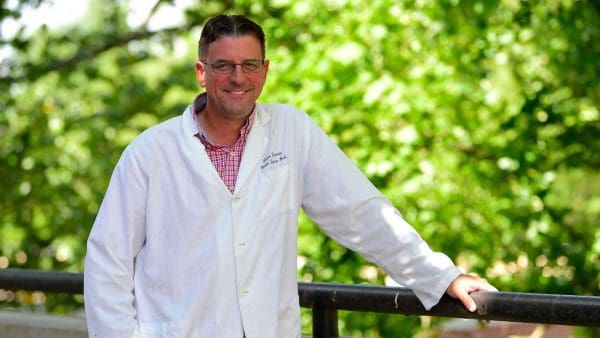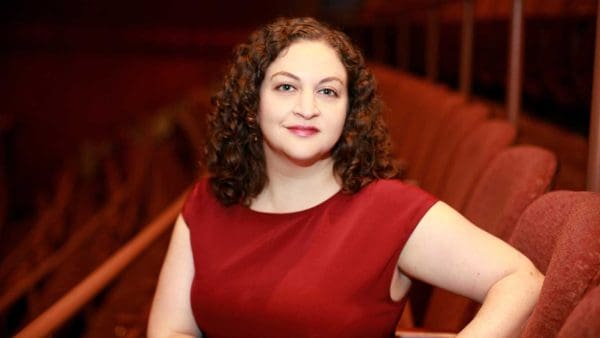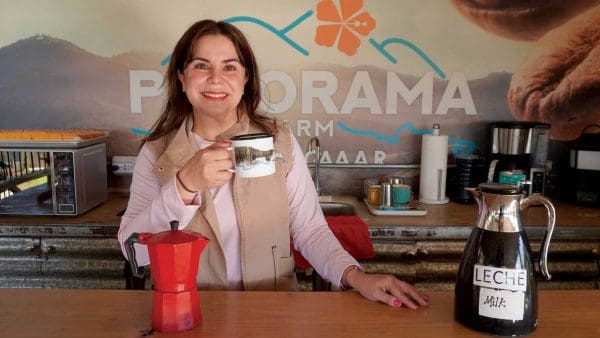
When museum director Asma Naeem ’91 develops plans for a new exhibition at the Baltimore Museum of Art, her thoughts go back to her undergraduate years and to an eager elementary school student named Ashley.
More than 30 years ago, she helped Ashley improve her skills in reading and math as part of the Johns Hopkins Tutorial Project.
“I just remember feeling so lucky that I was getting to be a part of this little girl’s world. It wasn’t an opportunity that I had ever had before,” Naeem says. “It opened up so many worlds for me.
“Now, whenever I’m welcoming the press and the public for the opening of a new exhibition, I think about how would Ashley feel walking into this space? Would Ashley even want to be in this space? How can we make sure we’re reaching her friends, her family, her colleagues, and making them feel welcome?”
Naeem became director of the Baltimore Museum of Art, located adjacent to the Homewood campus, last February. The first South Asian and first person of color to lead the museum, she oversees its collection of more than 97,000 objects and an annual operating budget of $23 million.
An absolute fundamental tenet of this museum is to be able to reflect the stories of the lives of the people around us.”
—Asma Naeem
Political Science and Art
Born in Karachi, Pakistan, Naeem moved with her family to Baltimore as a child and commuted to Johns Hopkins all four years. She began as an English major—in love with the classics and the written word—then switched to political science, intending to become a lawyer like her aunt.
On a whim, she took a course in Italian Renaissance art, which led to a new passion; a double major in art history; and such inspiring mentors as the late Charles Dempsey, an Italian Renaissance and Baroque scholar, and Yve-Alain Bois, a major figure in 20th-century modernism.
Meanwhile, her political science courses supplied wisdom that Naeem now uses to navigate the intersections between art, culture, and public service.
After college came law school at Temple University, then work as an assistant district attorney in the Manhattan District Attorney’s Office. Naeem describes her job as a prosecutor as emotionally draining. She sought relief by spending time in art museums and galleries, and began searching for another way to serve “those who may not necessarily have a voice.”
Returning to Maryland
Returning to Maryland in 2000, she worked as an attorney, taking graduate art history courses at night, while her husband, Johns Hopkins orthopedic surgeon Babar Shariq, attended medical school at Howard University. By the time Naeem received her doctorate from the University of Maryland in 2011, the couple was also raising three children.
Over the next decade, she served as associate curator of prints, drawing, and media arts at the National Portrait Gallery, and as chief curator and interim director at the BMA.
Naeem is attracting new audiences by illuminating contemporary issues and different perspectives. Last summer’s very popular show The Culture: Hip Hop and Contemporary Art in the 21st Century captured hip hop’s influence through more than 90 works of art and fashion. In 2022, the exhibition Guarding the Art, curated entirely by members of the museum’s security team, attracted national attention.
“In what may be the first show of its kind, guards at the Baltimore Museum of Art are stepping into the light as guest curators—and individuals,” The New York Times reported. “It is part of a national reckoning by museums striving for diversity and inclusiveness—and looking for original ways to bring in a range of voices to interpret the art.”
“An absolute fundamental tenet of this museum is to be able to reflect the stories of the lives of the people around us,” Naeem says. “Relevance means being able to relate human-to-human. It’s a great skill that directors need to have, and I saw that [demonstrated] in my coursework at Hopkins.”




